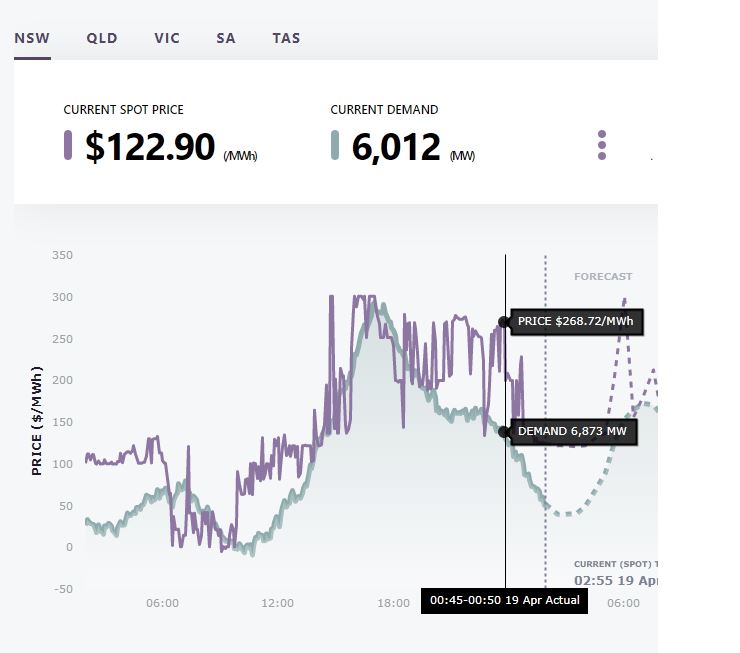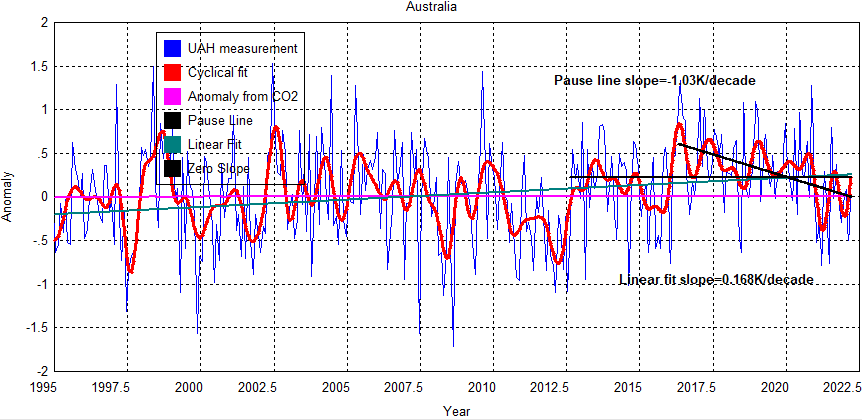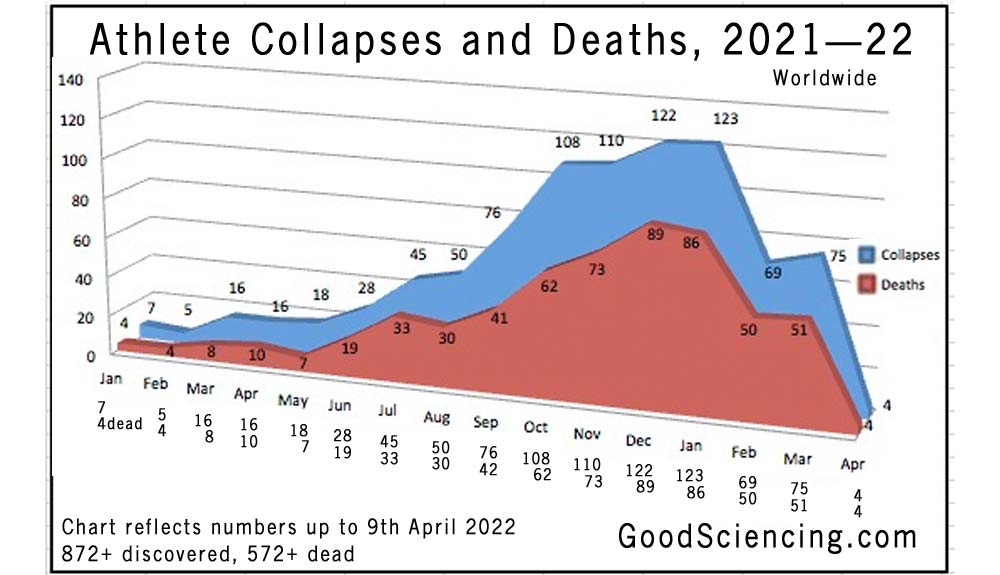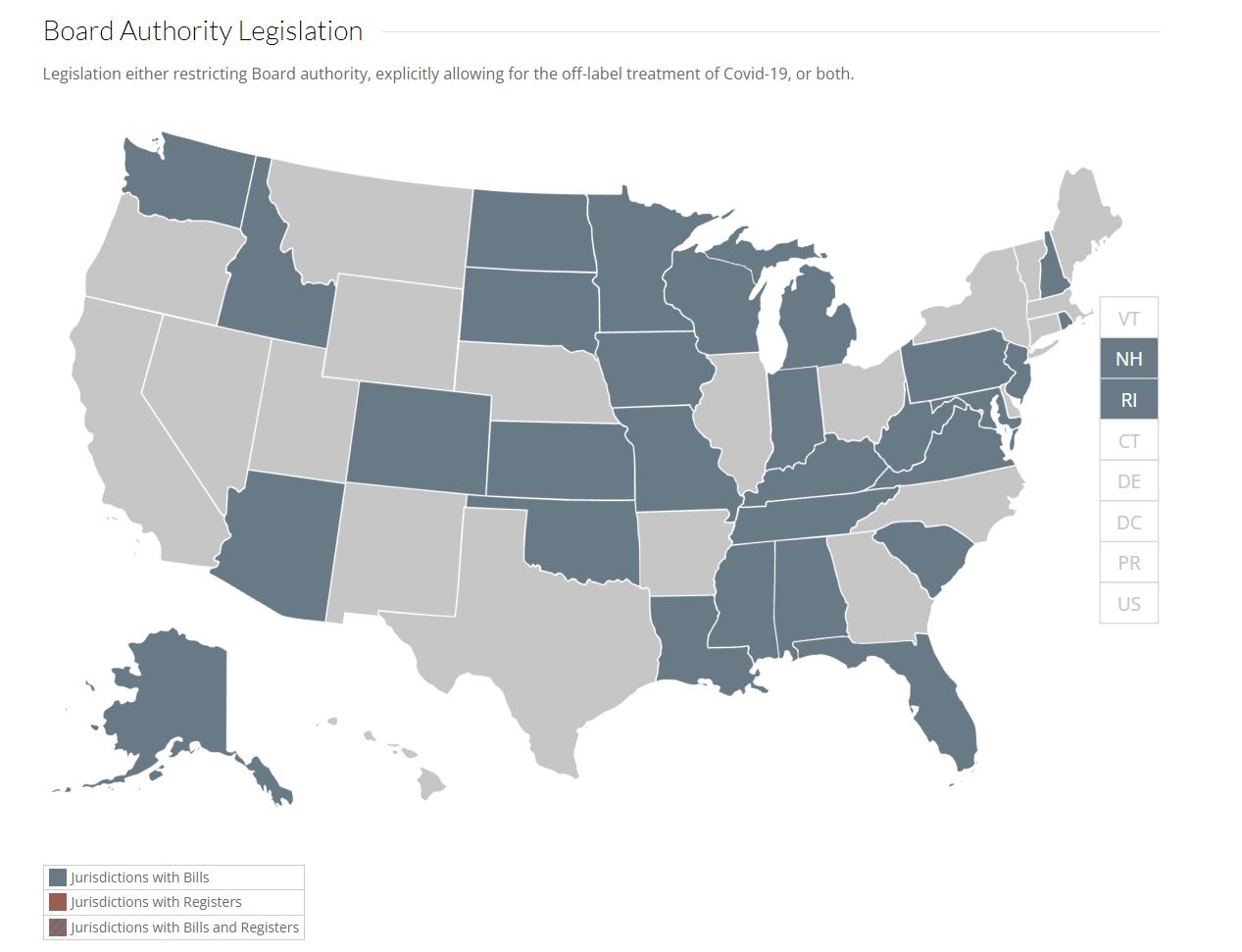|
|
||||
 LaTrobe Valley Coal Plant There’s been mayhem quietly running on the Australian electricity market this month. Shh. April used to be an easy month on electricity markets — it’s not summer and not winter, and nothing is stretched. At least not in theory. But this month prices have been running at $150 – $250 per megawatt hour. This is a big rise, even from last month when prices were often $70 – $120 in the big three states. To put that in perspective, six years ago in March, wholesale electricity prices were a tiny $30 – $60. Last month a couple of units in a Victorian plant suffered a fire. Then on April 1, a single coal turbine at Liddell was retired, and then there was a wind drought, and now, lo, behold “we have lift-off”! Prices are now consistently running at $200-$300 per MWh, and often spend most of the day above $100. Hey, but it’s only been a few weeks. Ouch, Ouch, Ouch Prices are cooking …. AEMO (Click to Enlarge) Don’t blame Russia: Less coal, means more expensive electricity.The headline makes it sound like coal outages are to blame, when really the only thing keeping electricity prices down in Australia are the coal plants: Domestic gas prices spike in April as coal outages put pressure on marketsNick Evans, The Australian …EnergyQuest chief executive Graeme Bethune said the sharp spike in domestic prices was not the result of additional exports of gas from the east coast. “The spike in domestic gas prices does not appear to be due to any increase in LNG export volumes. In February Gladstone shipped an average of one LNG cargo per day but slightly less at 0.9 cargoes per day in March and in the first half of April,” Mr Bethune said. “Nor do increases in electricity prices appear to be closely correlated to coal prices. Newcastle thermal coal prices reached a record $US430/tonne in March but were $US276/tonne by mid-April.” Instead, outages at key coal-fired power plants in Victoria and NSW appear to have caused the spike in both power and domestic gas prices, along with a seasonal fall in solar generation as autumn rains set in across the NEM. In late March a fire at a coal storage facility at EnergyAustralia’s Yallourn power plant in Victoria’s Latrobe Valley took two of its four generators out of service, stripping 700 to 750MW of power from the system. On April 1 AGL took the next step towards the eventual closure of its Liddell plant in the Hunter Valley, retiring a 500MW unit from the facility. Mr Bethune told The Australian the winter outlook for east coast gas prices very much depended on the stability of the coal-fired fleet in the NEM. Remember when Hazelwood closed? Australian energy prices have never been the same. On an unrelated note: There’s a war. Why do Australian gas suppliers have spare gas to sell? “If Japan wishes to replace Russian cargoes and the US and Qatar focus on replacing Russian gas in Europe, there is certainly an opportunity for Australia to go a long way towards replacing Japan’s Russian LNG,” the report said. Don’t most of the Northern Hemisphere want to “get off Russian gas”? Aren’t they supposed to be beating a path to other gas suppliers? This was actually written by Mark Lawson. We are collaborating on a collection of papers covering the main problems with intermittent energy. He appears frequently in The Spectator and he is a published writer in his own right. His website. Key points The use of hydrogen as the medium of a power export market has an obvious, major flaw. Unlike coal or gas, hydrogen can be created anywhere where there is water, wind and sun. Why should any country import the gas when they can make it on their own territory? Hydrogen is not like LNG. It is much harder to put into liquid form, is much more likely to leak and has different properties which make it a far more dangerous gas. Hydrogen has been used as a feedstock in many industrial processes for decades, but the vast bulk of the gas is consumed in the same place it is made, from methane and steam. This is a cheaper method of manufacturing than by using electricity. Energy losses from converting electricity from renewables into hydrogen and then back again at the other end means that it is less wasteful to use a transmission line. These can now carry power over thousands of kilometres. A battery is also a more efficient and safer means of storing power, at least compared to hydrogen. Hydrogen is already used widely in industrial applications and certain specialised power applications such as fuel cells for submarines, but it has no role at all as a means of transmitting or storing power. Its main role is as a comforting fantasy for activists hoping for the green nirvana. The worst idea of a bad lot If we had to hand out awards for the worst idea among all the proposals for generating and storing “clean” energy, then the large-scale use of hydrogen as a sort of alternative to LNG would be a major contender for the top prize. Unlike power from coal and gas green power can be generated anywhere, and almost any country that can be named has at some point talked about becoming the “Saudi Arabia of wind” as UK Prime Minister Boris Johnson put it. In other words, why would, say, Japan, import horrifically expensive power from elsewhere when they can make horrifically expensive power in their own territory, including coastal waters? This point was forcefully made by Professor of Engineering at the Australian National University, Andrew Blakers, in the Australian edition of The Conversation, an online site for academic articles, in early April (1). He says that in the March 2022 budget the federal government set aside hundreds of millions of dollars to expand Australia’s green hydrogen capabilities. These funds are supposed to help create a major green hydrogen export industry, particularly to Japan, for which Australia signed an export deal in January. However, he also points out that Japan has more than enough solar and wind energy to be self-sufficient in energy and – assuming all that energy is harnessed – does not need to import either fossil fuels or Australian green hydrogen. Whether or not you agree with Professor Blakers that Japan can realistically meet all of its energy needs from local renewable energy the country can certainly generate hydrogen locally. Background Hydrogen is currently used as a feedstock for many industrial processes such as treating metals, producing fertilizer, and processing foods. Petroleum refineries use hydrogen to lower the sulphur content of fuels. Almost all of that commercial hydrogen comes from the traditional extraction method relying on steam and natural gas. And for good reason – this is by far the cheapest way of extracting hydrogen. Proponents of renewable energy, however, now want to build hectares upon hectares of wind farms and solar energy generators to make hydrogen by passing an electric current through water. This involves putting two bare ends of a wire attached to a power source into the liquid. Hydrogen bubbles off the wire plugged into the negative side of the source, or cathode, and oxygen comes off the positive or anode wire. The idea is to store this hydrogen in some way, preferably in liquid form like LNG, then ship it off to where it is needed as a replacement for fossil fuels in applications such as creating steel, generating electricity, powering electric vehicles, shipping and aviation. This is basically the vision set out in a 2019 report (2) produced by the impressively named Council of Australian Governments Energy Council Hydrogen Working Group, chaired by Australia’s chief scientist of the time, Professor Alan Finkel. This report set out pathways for developing such a trade, but it was full of recommendations for developing pilot projects and building supply chains. There was nothing about actual commercial opportunities. Like the bulk of recommendations in green energy the emphasis was on government action in order to create this export market, preferably by creating demand. Commercial interest would follow, or so it was hoped. Should this hydrogen market come into existence vast amounts of hydrogen would be required but, as was not mentioned prominently in the Finkel report, the process of making, condensing and shipping hydrogen is known to be technical challenging and wasteful. Professor Blakers cites an estimate that converting energy to hydrogen, shipping it to where it is needed and then converting back into energy could consume 70 per cent of the energy generated. Michael Liebreich, a senior contributor to BloombergNEF (new energy finance) wrote in 2020 (3) that as an energy storage medium, hydrogen has only a 50 per cent round-trip efficiency – far worse than batteries. He estimated that hydrogen-powered fuel cells, turbines and engines are only 60 per cent efficient – far worse than electric motors – and far more complex. As a source of heat, hydrogen costs four times as much as natural gas. As a way of transporting energy, hydrogen pipelines cost three times as much as power lines, and ships and trucks are even worse, he says. Another factor that is particularly significant in Australia is the need for large quantities of very clean water for the process. This may not be an issue for the small pilot projects that will be funded by government grants, but it will probably preclude large-scale commercial production. Activists who talk so glibly about using hydrogen to store energy are no doubt thinking of Liquid Natural Gas, which is now the basis of a thriving international trade using purpose-built container vessels. Thanks to enormous projects on the North West shelf and in Queensland, Australia’s exports in LNG are now double those of thermal coal by value. The international trade in LNG started growing in the 1960s with the large scale adoption of techniques for liquifying the gas in giant facilities called “trains” and for keeping it liquid for long periods in what amounts to giant thermos bottles. LNG requires low temperatures, minus 160 degrees Centigrade, but the gas itself is a source of energy and some of that energy can be used to power the liquification process. Once at that temperature the liquid form of the gas can be stored relatively safely at atmospheric pressures. Apart from a couple of accidents when the technology was new, LNG has an impressive safety record. All that occurred without the mixed blessing of government direction. The technical problems of shipping LNG were worked out, the facilities were built and customers were found to buy the output before the general public was fully aware of the general usefulness of being able to trade gas across oceans. As noted, Hydrogen has been produced on a large scale for some time, albeit from steam and methane, but the bulk of it is consumed on the spot. Up to the 1960s hydrogen was also used in town gas pipelines, usually contributing around 10 per cent of the mixture in a still mainly methane system. This became uneconomic with the advent of the large-scale LNG industry. Unlike LNG, hydrogen presents considerable difficulties in its storage and use. It is a much smaller molecule than methane, so seals and pipes that would comfortably prevent methane leakage do not keep hydrogen in. The liquification temperature for hydrogen is much lower than that of methane, specifically minus 253 degrees centigrade or just 14 degrees above what physicists call absolute zero – you can’t get any colder – and so requires considerably more energy to achieve and maintain. The alternative is to store the gas under very high pressures. It is a far more dangerous substance than LNG. History buffs will recall the explosion and fire that destroyed the German airship the Hindenburg in 1937, which used hydrogen to stay afloat. The technology of airships was abandoned after that but the few such aircraft still in service use helium rather than hydrogen to stay aloft. At the very least, major hydrogen systems will require a stringent set of safety rules and procedures which may have to be learned the hard way. Then there is the problem that switching to hydrogen is not just about slapping a hydrogen tank on an existing engine or using existing pipelines. Everything will have to be redesigned and rebuilt, all at eye-watering cost. They claim that green power will be so cheap the wastage from using hydrogen to store the power will not matter. Really? Refer to the chapters in this book on renewable energy, in any case if it’s so cheap why wouldn’t each country create its own power and never mind any export market? If energy has to be shifted around internally, why not reduce the losses and use a transmission line? If power has to be stored then massed batteries may be almost as ridiculous a solution, but at least it would be cheaper, more efficient and (probably) safer than a hydrogen storage unit. Another argument is that hydrogen can be stored cheaply in salt domes. These geological features are a key part of the formation oil deposits. The salt can be extracted comparatively easily to form large, underground pockets for gas storage, or so it is hoped. There are development projects in Europe and in the US looking at salt domes but the last word in this area such be left to another BloombergNEF report. “Storing hydrogen in large quantities will be one of the most significant challenges for a future hydrogen economy. Low cost, large-scale options like salt caverns are geographically limited, and the cost of using alternative liquid storage technologies is often greater than the cost of producing hydrogen in the first place.” (4) Activists also point to hydrogen’s possible use in town gas supplies. That is at least possible, but town gas mains are now run at much higher pressures than they were in the 1960s, and have been designed for methane, not hydrogen. There may well be safety issues. There are already niche uses where the advantages of hydrogen outweigh the disadvantages such as in rocket fuel and fuel cells for submarines. However, the use of hydrogen as a means of storing and retrieving energy was the subject of considerable research long before the present activist enthusiasm but, unlike LNG, no technological solution permitting its commercial use in the power system has emerged. To judge by the large amount of nonsense spoken and written about its use, the main value of hydrogen is not commercial at all. The gas’s main value has been to provide comfort to activists. It is one of the many fantasy stories they tell themselves in the expectation of some day reaching green nirvana, somewhere over the rainbow. It is about as much use as any other fantasy story. References The real cost of backing up the intermittent provision of wind and solar power has been spelled out in a comprehensive model that has achieved virtually no coverage in the public discussion of energy issues. This is a scandalous situation that reflects the ignorance and virtually criminal negligence of the journalists and commentators of the nation. This is a short version of the report. According to all the people who are supposed to know about these things the road to net zero is clear and the days of the coal power are numbered because wind and solar power are so much cheaper. How much cheaper? Well the inputs of wind and sunbeams come free of charge, so how much cheaper can you get! The CSIRO GenCost study is regarded as the last word on the matter and who can challenge the authority of the CSIRO? It is disappointing to find that the study is full of holes and dubious assumptions. The biggest hole of all is the failure to account for the full cost of firming the intermittent inputs. This is currently provided by the much maligned coalers and it comes free of charge to the wind and solar industries. See here for the frog and centipede relationship between conventional power and the predatory parasites of the RE industry. In November 2020 a group of consultants tabled a report in the NSW Parliament with the results of some elaborate modelling work to generate the total System Levelised Cost of Energy (SLCOE) which is defined as — “…the average cost of producing electric energy from the combination of generation technologies chosen for the system over its entire lifetime” The models include additional transmission costs for various options including replacing brown coal with nuclear energy, replacing coal with gas and 100% RE with hydro and storage. SUMMARY OF RESULTS
The best policy option to control costs and minimise emissions would appear to be to replace coal generation with nuclear power. Keep reading → Across the continent downunder, “the new pause” in temperatures is now 9.6 years long as measured by the most reliable system there is — UAH satellites. If and when we hit the Ten Year Pause, the National Climate Alarm Centres will all issue press releases, just like the other headline events, right? Just like the “Worst bleaching since last year”, “Hottest day since records began” in 1993. Six hot days in a row in one city of Australia. Which model predicted that temperatures in Australia would do “net nothing” for a decade? Thanks to Charles for the graph! (His explanation of calculating the “zero slope” is at #14.2.1)  The length of the zero slope pause line is now 9.6 years. Technically, temperatures have been falling according to the UAH Satellites since May 2016. Satellites are obviously better for global and continental temperature trendsAssuming we care about trends that is, and not just one-second records. The UAH satellites circle continuously, and cover the entire continent. They don’t just measure 100 small points with thermometers, next to airports and incinerators, but 7 million square kilometers of area. Some smarty pants will say UAH is bad, because it doesn’t match the land thermometers like RSS does. But that IS the point, RSS was adjusted to match the hyper-adjusted junk on land, and now they’re all terrible. I explained before why UAH really is so much better: Five reasons UAH is different (better) to the RSS global temperature estimates
… We are now alert to the failure of the green energy transition and even more alarming for genuine environmentalists is the fact that “decarbonization” policies are wreaking more havoc on the planet than global warming ever will. That has been going on for decades in plain sight and Michael Moore gave a glimpse of that ugly picture in his documentary film Planet of the Humans. No wonder that the usual suspects tried to close him down, happily without success. Still I have not seen it mentioned lately, certainly not in the “progressive” press. Bill Stinson of the Energy Realists of Australia has compiled a record of environmental and human rights devastation through ten phases of wind and solar power production, from sourcing minerals to the disposal of work out windmills and solar panels and the remediation of damage (what remediation did you say?) Phase 1 – Raw material sourcing – Environment Destruction.
Environment-Destruction-The-Dark-Side-of-Renewable-Energy-1 Keep reading → I have been expecting a shakeout in the RE industry for some time because in Australia more and more providers are feeding into a static market. In recent years the demand in the grid has possibly even declined due to the flight of power-intensive industries although the demand for power is projected to increase a great deal in future due to population growth and the anticipated explosion of numbers of electric vehicles (not to be confused with the explosion of the EVs themselves.) I think the inflated projections of the rise of EVs are rubbish but that is another story. RE developers in Australia are frustrated by delays in connection due to inadequate infrastructure (poles and wires) and they want the taxpayers to kick in $20 billion of capital expenditure to get them out of trouble. According to our planners in AEMO and associated lobby groups this will pay for itself many times over in a decade or two. In their dreams. Long before that the industry will implode when the impossibility of the transition becomes impossible to conceal when Liddell and Eraring go off line. The big news about the travails of the wind industry overseas is the increase in construction costs which could be as much as 30% over the last year. At first, it was a supply chain problem due to the pandemic, now the supply chain issues are aggravated by the war and worse is to come as the inflation rate in the economy at large flows into the wind industry. Worse again is the pinch on lithium and other rare earths that will also get a great deal worse. Even before the latest round of inflation the offshore wind industry in Britain was in trouble. Inspection of the books of the leading wind providers found that the costs of deep-water construction and maintenance were much larger than expected. All in all it is a fascinating time to watch the end game of the RE fantasy playing out although it has some way to run due to the amount of capital that the woke finance industry and people like Twiggy Forrest are prepared to commit – with some help from the taxpayers of course. Keep reading → We are approaching a tipping point in the electricity system where there will not be enough dispatchable power available to get through windless nights. When solar and wind power are both out of action at the same time, clearly the lights will go out unless there is 100% backup from conventional power. Forget about grid-scale storage, there is none in sight for the foreseeable future that is feasible or affordable. The RE enthusiasts get excited every time they record more penetration of wind and solar into the grid. They don’t appear to notice that the same AEMO data that record increasing penetration, also show zero penetration on windless nights. That is especially clear in South Australia where there is always a deficit when the wind is low overnight. They depend on brown coal power from Victoria to keep the lights on, and no amount of additional RE capacity will help. Those periods of zero penetration are like the holes in the wall of a dam, or gaps in the fence around a paddock of sheep or cattle, or gaps in a flood protection levee. If the dam has a gap in the wall it ceases to function as a dam, the holes in the fence allow the stock to get out and gaps in a flood protection levee eliminate the protective effect. Building more installed capacity of RE does not help on windless nights because when next to no power is being generated, increasing the installed capacity of the generators by a factor of five, ten or twenty still delivers next to nothing. To see what that looks like in practice, see the chart from a paper by Paul McArdle who has been studying the low wind problem for many years. Jo Nova reproduced the chart in a recent post. Keep reading → Character is destinyDaniel Hannan explains that Putin was undone by corruptionBribery is no way to build an empire. Putin’s intelligence and military bureaucrats didn’t believe in the Russian Empire, and they kept the cash they were supposed to use for bribes in Ukraine. Then lied about the bribes and ultimately left Putin in a precarious position. But they too are vulnerable. Indeed Ukrainians are suffering. Russians are suffering. There are few winners and many losers. Great civilizations are built on trust. Millions of people work most efficiently when they all know the rules, and everyone has a voice. We used to have that. Comments here by David Evans on the article by Daniel Hannan
By annexing Crimea and taking Donbass, in 2014 Putin tipped Ukraine into becoming majority western-oriented:
Bribery was supposed to make a takeover easy, but the bribery bureaucrats took the money for themselves:
So the bureaucrats tried to torpedo the invasion by leaking the plans to the US:
Corruption hobbled the military too:
Why autocracies fail but democracies succeed — freer speech:
Fascinating. It all fits, and explains much. Probably true. There are people tracking all the reports of athletes suddenly collapsing and dying in their prime, or heartbreakingly, even in their teens. This isn’t a definitive study, but where are the answers and why don’t we know them? There are a hundred million reasons to supply data that shows vaccines are “safe and effective”. If our health really did matter, and the incidence of sudden deaths in athletes was the same as every other year, where are those studies? Why aren’t we discussing this on the news? Some of the collapses and deaths listed here may have nothing to do with vaccines, the anonymous researchers admit and declare that. They want the full data, we all want the data. But it’s nowhere to be found. The medico’s and football clubs, and the Department of Health have gone from bragging about getting their boosters on Twitter to saying nothing. They are not so keen anymore to report or declare vaccination status. The rise in mid 2021 start at the same time a massive experimental medical program starts. It might be coincidence, but if it’s normal, they would be saying so, with open statistics and data, not shutting down the conversation, and sacking football managers. 890 Athlete Cardiac Arrests, Serious Issues, 579 Dead, After COVID ShotThe mainstream media still are not reporting most, but sports news cannot ignore the fact that soccer players and other stars collapse in the middle of a game due to a sudden cardiac arrest. Many of those die – more than 50%.  There has been a rise in reports of athlete sudden collapses and deaths since July last year. | Goodsciencing.com What’s a normal year?A review of sudden cardiac deaths in sport found about 29 a year mentioned in medical literature. A different study of the US found about 70 annual deaths across 38 different sports. There are more deaths listed in the peak months in that graph above than usually occurred in an entire year. The International Olympic Committee in Lausanne, Switzerland, studied documents from international data banks from 1966 to 2004. Those documents indicate 1,101 sudden deaths in athletes under 35 years of age, an average of 29 athletes per year, the sports with the highest incidence being soccer and basketball. (NIH Document) A study by Maron on sudden death in US athletes, from 1980 to 2006 in thirty-eight sports identified 1,866 deaths of athletes with cardiac disease, with a prevalence of hypertrophic cardiomyopathy. More people are writing to tell us that in many cases, we didn’t mention a person’s vaccination status. There is a good reason for that. None of the clubs want to reveal this information. None of their sponsors want to reveal it. The players have been told not to reveal it. Most of their relatives will not mention it. None of the media are asking this question. So what should we do? Stop this now? No, we will collect as much information as we can, while it is still available, because eventually, more information will come out, and we will be here to put it together. Will it mean anything? We don’t know. What we do know is that there is a concerted world-wide effort to make this information go away, so that fact alone tells us it must be collected, investigated and saved so other researchers can look at it to see if there are any useful patterns. Clubs Hide Vaccination Information NowHere is a demonstration of how sports clubs do not want the injuries of deaths of their players to be associated with the COVID vaccines. It tells the story of why they will not report which of their players has been vaccinated and when. Sunderland FC manager Lee Johnson suggested that the COVID vaccines may have caused the heart issues for his goalkeeper, Lee Burge. The club then sacked the manager. There’s a German site with a similar list. It’s the greatest dereliction of duty …
h/t Rod, Peter C, Macha, Beowulf, Hanrahan, MP, John Connor II, and Tonyb. Dead birds save the world kids!Welcome to Your Green Dystopia. The wind turbines at ESI Energy killed 150 eagles in the last ten years and last week the company was fined $8 million dollars “or $53,300 per carcass”. Which sounds someone cares about these birds. But don’t think the The Fisheries and Wildlife Service (FWS) are outraged at the deaths of eagles. The real problem was not the slaughter, but that ESI didn’t fill out the paperwork first. If they had only got their permits to kill, it would have been fine. The new FWS permitted “take” limits of bald eagles has just been increased to 15,800 a year. Do Eagles Lives Matter? It depends on who kills them.
As Gregory Whitestone says: The government is funding this knowing the birds are dying in the name of Clean Energy The DOJ press release further stated: “ESI and its affiliates received hundreds of millions of dollars in federal tax credits for generating electricity from wind power at facilities that it operated, knowing that multiple eagles would be killed and wounded without legal authorization.” The legalized slaughter of eagles and other large birds of prey was legitimized under the Obama administration and continues today. At the time, it was estimated that nearly 600,000 birds of all types were killed by the much smaller wind footprint at that time, including 83,000 hunting birds such as hawks, falcons and eagles. Unknown to most citizens is the fact that the FWS has established a “take limit” for wind energy companies to kill bald eagles. This would be similar to a bag limit for a hunter. However, hunters dare not as they are not of the protected class and would be subject to a maximum fine of $250,000 or two years of imprisonment for a felony conviction. FWS regularly imposes fines on oil companies and electric transmission firms for inadvertent deaths of bald eagles, all the while giving its seal of approval to green-induced eagle carnage of a grand scale from turbines. The FWS bald eagle take limits were revised February 2022 to allow a more than four-fold increase in the legalized slaughter. Gregory Wrightstone who is a geologist and author of the bestselling book, Inconvenient Facts: The Science that Al Gore Doesn’t Want You to Know. File this story away next time you meet someone who thinks wind farms are good for the environment. Also handy for children in schools where they need to explain the pros and cons of renewables. h/t ClimateDepot What’s remarkable is that a conversation had by so many on the internet has finally made it, for a moment, onto television. No surprise it happened on a footy show. It certainly wasn’t going to happen on The 7:30 Report, Four Corners, or 60 minutes. A star Australian football player had a “scary” incident with nausea, dizziness, and heart irregularities and missed a lot of the game this weekend. The hosts of the show casually asked if it was the booster shot — saying “that’s obviously the word going around.” Possibly they were relaxed about discussing it because one of the shows hosts even has Bells Palsy, and they had discussed it off camera with him. So they let down their guard: “Exactly, heart issues and Bell’s palsy has gone through the roof since the boosters and Covid issues,” Lloyd said.” “We had (sports journalist) Michelangelo Rucci on (3AW) on Friday night and he said that there’s a ward in Adelaide filled with people with similar symptoms to Ollie Wines – nausea, heart issues – so there has to be something more to it.”
They still rush to add they’re proudly triple jabbed because they live in fear of the medico-fascists. A day later and the pushback has begunNews stories are appearing everywhere with Ollie Wines saying he’s now 100% fine, and “nothing to do with the vaccines”. Brownlow medallist speaks after Footy Show stars’ shock medical claimWines spoke for the first time on Monday. “I’m 100 per cent back to normal, thanks to the Calvary staff the doctors and nurses there,” he said. “They really looked after me, and now I’m 100 per cent fine. There were a few little issues but they have been rectified now.” He said his heart issue is not related his Covid vaccination or vaccine complications, including myocarditis. Ollie Wines hits back at claims his heart irregularity is linked to the COVID jab as Port Adelaide star insists his health scare is ‘completely unrelated’ to the vaccineIt’s more a heart rhythm issue that is pretty common in elderly people and elite athletes. It’s only pericarditis, and he’s only 27 and spent the night in hospital. We hope it works out well. Having sold their souls not-covering Biden-family corruption, election scandals, Pharmaceutical malfeasance, and rackets running through politics and science, it’s no surprise that barely 1 in 6 Republicans trust most media outlets. Mass lies will do that. Look at the vast partisan gulf in the poll below which asked “how trustworthy do you rate the news media…“. Can anyone look at this graph and argue that the media is not dominated by left-leaning views? Fully 18 of 22 media outlets appeal to, and are trusted by around three times as many left leaning voters. It’s no surprise that the most polarized and divisive news source in America is CNN followed by The New York Times and Jeff Bezos’ Washington Post.  The Republicans (red) are more skeptical than Democrats (blue) of nearly every media outlet. The least polarising of the mainstream news outlets is the Wall Street Journal. The only media outlet arguably that serves both political views is The Weather Channel, but even there half of Republicans and 40% of Democrats don’t “trust” it. There is no common Town Square media left where both sides of the political spectrum can hear each others views. How things have changed since the year 2000Republicans were always less likely to trust the media than Democrats were, but in the last twenty years that trust has evaporated.  | Gallup In New Zealand trust fell because people now see the media as an “extension of the government”Trust in the media is falling in New Zealand too “at an alarming level”. (It’s only alarming if you think the media is worth trusting). The Daily Examiner in New Zealand seems perplexed that government funding might be a bad thing. Almost like they and the academics at the AUT research centre for Journalism, Media and Democracy, who did the study, have never once thought about the Government as a vested interest. Trust in news falls alarmingly, steep declines for Māori TV, TVNZ and RNZWhile in 2020, 62% of New Zealanders trusted the news they consumed, in 2022 the figure was 52%. Additionally, general trust in the news continues to decline.
Funny how telling the public to obey the government, without any questions or alterative views, makes the media look like a wing of the bureaucrats because that’s exactly what it was.
|
||||
|
Copyright © 2024 JoNova - All Rights Reserved |
||||





















Recent Comments